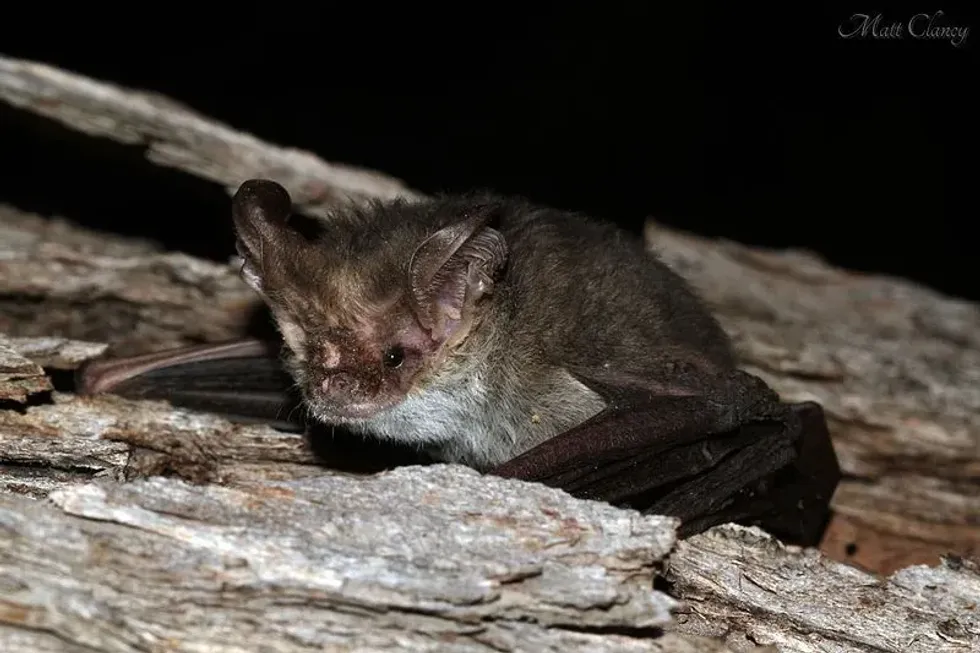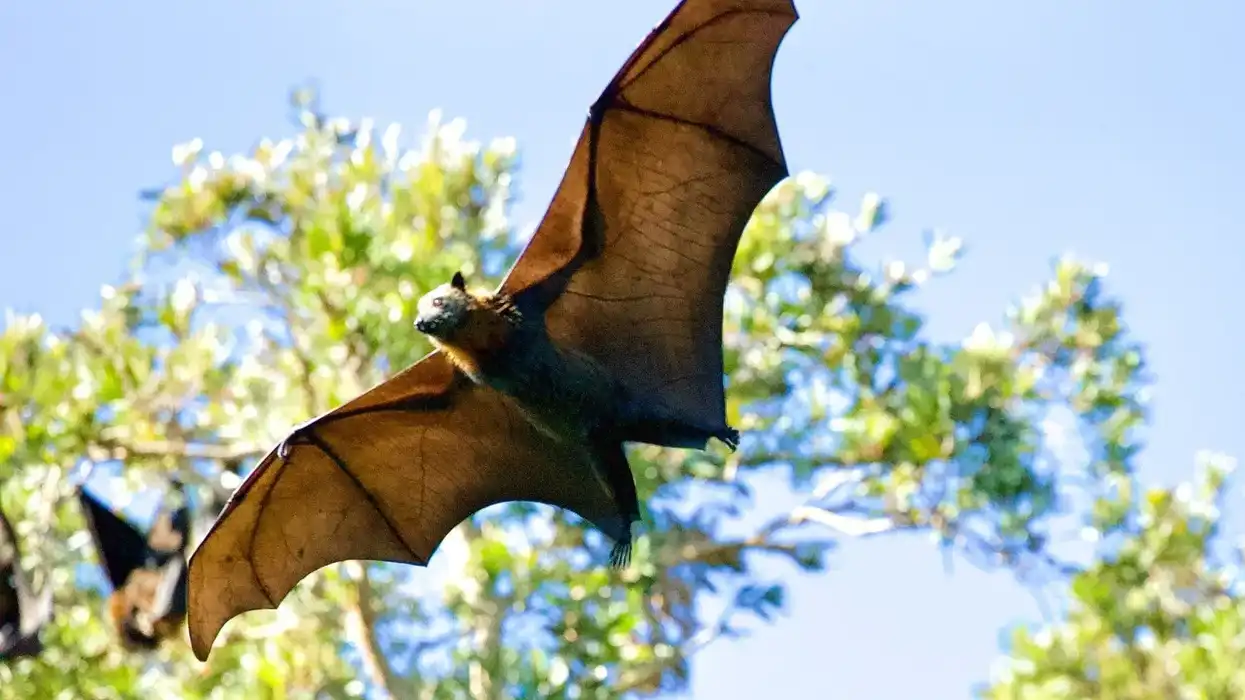The lesser long-eared bat (Nyctophilus geoffroyi) is a type of long-eared bat species belonging to the genus Nyctophilus, which is endemic to Australia.
Similar in appearance to other bat species, it is known for its small size and large wings which measure almost as much as its whole body.
They are the most common species of bats in Australia and can be found in a variety of locations, ranging from arid deserts and moist rainforests to abandoned buildings and tree hollows in local parks.
They are similar in appearance to the brown long-eared bat, also belonging to the family Vespertilionidae, being smaller and light gray in color instead of brown.
These bats are quite adorable and harmless and can be seen hanging out in local parks, trees, and buildings during the day. They are quite useful as well because their diet consists mostly of pests such as crickets, flies, and beetles which can plague the urban household.
To learn more about these fascinating bats, read on! For more relatable content, check out these hoary bat facts and red bat facts for kids.
Lesser Long-Eared Bat Interesting Facts
What type of animal is a lesser long-eared bat?
The lesser long-eared bat (Nyctophilus geoffroyi) is a type of bat belonging to the family Vespertilionidae.
What class of animal does a lesser long-eared bat belong to?
The lesser long-eared bat is a type of mammal and belongs to the class Mammalia.
How many lesser long-eared bats are there in the world?
Though the exact number of long-eared bats is unknown, they are quite common, being a regular sight in their native home of Australia.
Where does a lesser long-eared bat live?
These bats are endemic to Australia and can be found all over the country. This bat can also be found in tropical and alpine woodlands, forests, mangroves, agricultural fields, and even in urban areas.
In urban areas, they can be found living in hollow walls, abandoned buildings, and tree hollows in wooded areas and foraging in nearby parks and reserves.
What is a lesser long-eared bat's habitat?
The lesser long-eared bat (Nyctophilus geoffroyi) is a very adaptable mammal and can be found in a variety of ecosystems. It prefers to live in arid regions with a reliable water supply. They make their homes in tree hollows, in buildings and in hollow walls, and under peeling bark.
Who do lesser long-eared bats live with?
These bats live together in colonies and are quite social. Pregnant bats often band together in groups called maternity roosts. Sleeping lesser long-eared bat roosts can be observed in buildings and trees during the daytime.
How long does a lesser long-eared bat live?
Though the exact lifespan of these bats is unknown, on observing the lifespan of other long-eared bats we can conclude that they can live for anywhere from 4-22 years of age, mostly on the higher side of this range.
How do they reproduce?
These bats breed in April, with the female taking the male's sperm and retaining it in her body in her uterus. The sperm then fertilizes the eggs once the cold weather starts, usually around late August to September.
The gestation period lasts for 72-93 days, with either a single pup or twins being born between November to December. These baby bats become independent by January.
What is their conservation status?
As these bats are a common sight in Australia, they have been listed as of Least Concern by the IUCN Red List.
Lesser Long-Eared Bat Fun Facts
What do lesser long-eared bats look like?
These small bats can be identified by their light gray-colored fur which is darker on their backs and lighter towards the top of their bodies. They have white fur on their underbellies.
Their characteristic long ears are almost as wide as their body is long, giving them a cute, slightly comical appearance. Their noses are quite high and they have a Y-shaped indent behind the nose leaf, making them easy to identify.
How cute are they?
These small, long-eared bats can be very cute. Despite being viewed as scary pests by most, they are very cute if seen up close with their large ears and round black eyes.
How do they communicate?
Bats communicate using echolocation. As they hunt at night when visibility is low, they give off shrill screeches that come into contact with prey, bouncing back towards them which help bats to determine the prey's location. During the mating season, male bats give off chemical scents which are reciprocated by the females.
How big is a lesser long-eared bat?
These bats measure around 2 in (5 cm) from head to toe, with their ears measuring 0.7-1 in (1.8-2.5 cm) each. Their forearms with wings are about 1.2-1.6 in (3-4.2 cm) long.
How fast can a lesser long-eared bat fly?
The lesser long-eared bat (Nyctophilus geoffroyi) has been reported to fly at an average speed of 12.4 mph (20 kph) normally. It also has one of the slowest foraging flight speeds and can fly at 2.5 mph (4 kph) as well.
How much does a lesser long-eared bat weigh?
The species of Nyctophilus geoffroyi bats are quite small and weigh between the range of 0.2-0.4 oz (6-12 g) only.
What are the male and female names of the species?
There are no specific names for either sex of this species. They are simply called male or female bats.
What would you call a baby lesser long-eared bat?
Baby lesser long-eared bats are called pups.
What do they eat?
These bats are insectivorous in nature and can be seen enjoying a large range of insects, with grasshoppers, moths, and crickets being their favorites. They have also been observed to feed on flies, lacewings, beetles, cockroaches, and spiders.
Are they dangerous?
No, this bat species is not dangerous unless they bite. They will not directly attack humans, often swooping close to catch any prey lurking nearby, but will not bite unless they feel threatened or are provoked. However, their bite can transmit rabies, a deadly disease that can prove fatal if not caught and treated in time.
Would they make a good pet?
No, keeping bats of any species as pets is ill-advised. Bats can spread diseases such as rabies through their bite which can prove deadly to humans if not caught in time.
They are also much more suited to their natural habitats and cannot be tamed easily. It is better to observe these creatures in the wild and not approach them.
Did you know...
Like all other bats, they are nocturnal in nature.
They are not rare. They can be found almost all over Australia and are an endemic species.
What is special about a lesser long-eared bat's ears?
The lesser long-eared bat (Nyctophilus geoffroyi) has impressively long ears compared to the rest of its body. These long ears, which it is named after, measure 0.7-1 in (1.8-2.5 cm) each. However, these are only half the size of the bat bearing the longest ears, the spotted bat having an ear length of almost 2 in (5 cm).
What is killing the long-eared bat?
Due to their small size and tendency to hunt close to the ground, these bats are easy targets for larger predators such as cats and owls. They are also victims of habitat loss due to constant deforestation and logging in order to build civilization, causing a small decline in their population.
Here at Kidadl, we have carefully created lots of interesting family-friendly animal facts for everyone to discover! Learn more about some other birds from our vampire bat interesting facts and fruit bat fun facts pages.
You can even occupy yourself at home by coloring in one of our free printable lesser long eared bat coloring pages.









